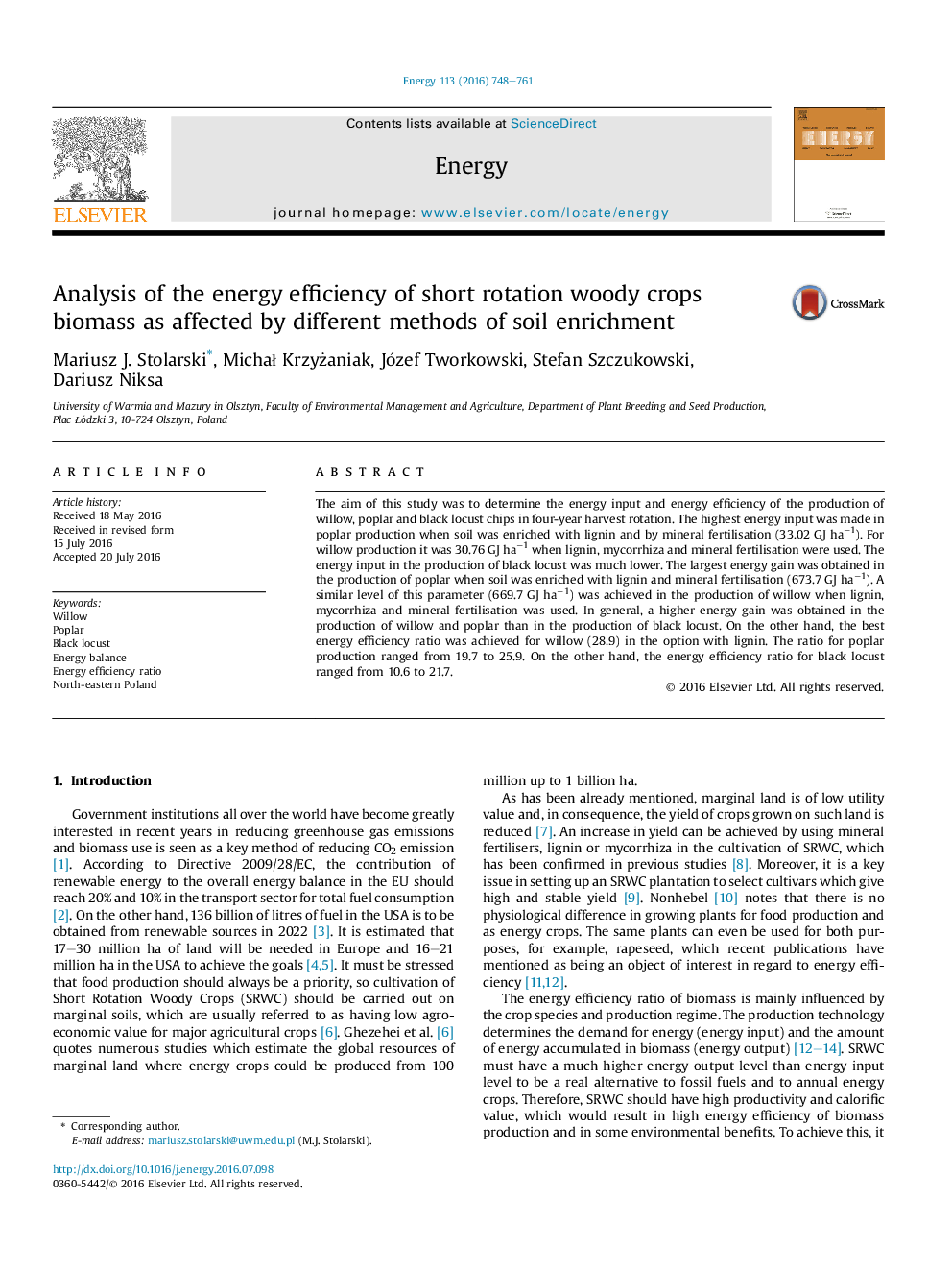| Article ID | Journal | Published Year | Pages | File Type |
|---|---|---|---|---|
| 1730779 | Energy | 2016 | 14 Pages |
•The energy input ranged from 6.69 GJ ha−1 to 33.02 GJ ha−1.•The largest energy gain was obtained for poplar (673.7 GJ ha−1).•The best energy efficiency ratio was achieved for willow (28.9).•The energy efficiency ratio for poplar ranged from 19.7 to 25.9.•The energy efficiency ratio for black locust ranged from 10.6 to 21.7.
The aim of this study was to determine the energy input and energy efficiency of the production of willow, poplar and black locust chips in four-year harvest rotation. The highest energy input was made in poplar production when soil was enriched with lignin and by mineral fertilisation (33.02 GJ ha−1). For willow production it was 30.76 GJ ha−1 when lignin, mycorrhiza and mineral fertilisation were used. The energy input in the production of black locust was much lower. The largest energy gain was obtained in the production of poplar when soil was enriched with lignin and mineral fertilisation (673.7 GJ ha−1). A similar level of this parameter (669.7 GJ ha−1) was achieved in the production of willow when lignin, mycorrhiza and mineral fertilisation was used. In general, a higher energy gain was obtained in the production of willow and poplar than in the production of black locust. On the other hand, the best energy efficiency ratio was achieved for willow (28.9) in the option with lignin. The ratio for poplar production ranged from 19.7 to 25.9. On the other hand, the energy efficiency ratio for black locust ranged from 10.6 to 21.7.
